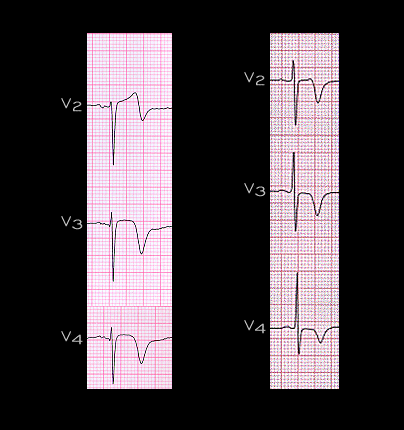
The deeply inverted T waves that occur in association with ischemia, with or without documented enzyme changes, as shown on pages 6.3.2, 6.3.5.and 6.3.6, and as shown here, are frequently associated with high grade stenosis of the proximal portion of the left anterior descending (LAD) coronary artery, as was documented in these patients. The association of this ECG pattern with proximal LAD disease was emphasized by Wellens and associates (Am Heart J. 117:65,1987). For this reason, this ECG pattern is sometimes referred to as “The Wellens sign”.
